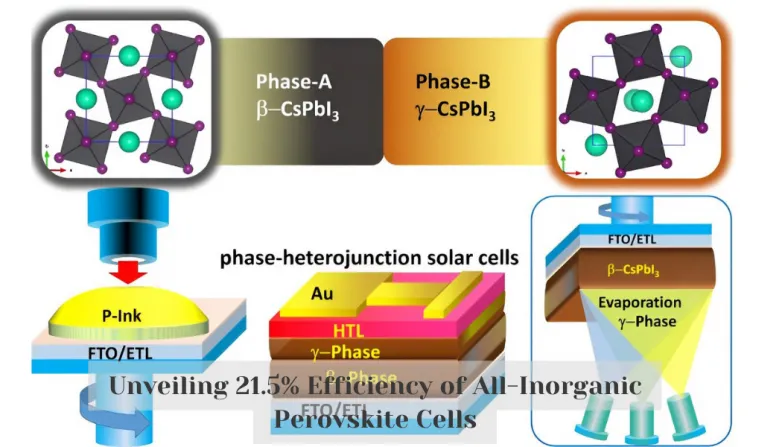Unveiling 21.5% Efficiency of All-Inorganic Perovskite Cells
Aug 17, 2023 02:43 PM ET
- Researchers at Chonnam University in South Korea have developed a new type of solar cell with 21.59% power conversion efficiency. Anti-solvent free hot-air method was used to fabricate the prototype, leading to 18.43% efficiency when scaled up. This could pave the way for widespread use of perovskite solar cell modules.

Researchers at Chonnam University in South Korea have developed a new type of solar cell made entirely of inorganic perovskite materials, achieving a power conversion efficiency (PCE) of 21.59%. The team used an anti-solvent free hot-air method to fabricate their prototype solar cells, which involves depositing a beta-CsPbI3 layer in ambient conditions and then depositing a gamma-CsPbI3 layer using thermal evaporation. When scaled up to real-world solar modules, the team's design achieved a PCE of 18.43%. Their approach could lead to the development of efficient, large-scale perovskite solar cell modules (PSMs) and pave the way for widespread adoption of these solar cells in the future.
Can Chonnam University's New PSMs Lead to Widespread Adoption?
- The team's design achieved a power conversion efficiency (PCE) of 21.59%, which is higher than the 18.43% achieved when scaled up to real-world solar modules.
- The solar cells developed by the researchers at Chonnam University are made entirely of inorganic perovskite materials, which are cheaper and more energy-efficient than traditional semiconductor-based solar cells.
- The team used an anti-solvent free hot-air method to fabricate their prototype solar cells, which involves depositing a beta-CsPbI3 layer in ambient conditions and then depositing a gamma-CsPbI3 layer using thermal evaporation.
- By making these solar cells more efficient and cost-effective, Chonnam University's researchers have enabled large-scale adoption of perovskite solar cell modules (PSMs).
- To further promote the widespread adoption of PSMs, Chonnam University's research team is working to improve the longevity and stability of their solar cells, which are currently only stable for a few months at room temperature.
Also read

